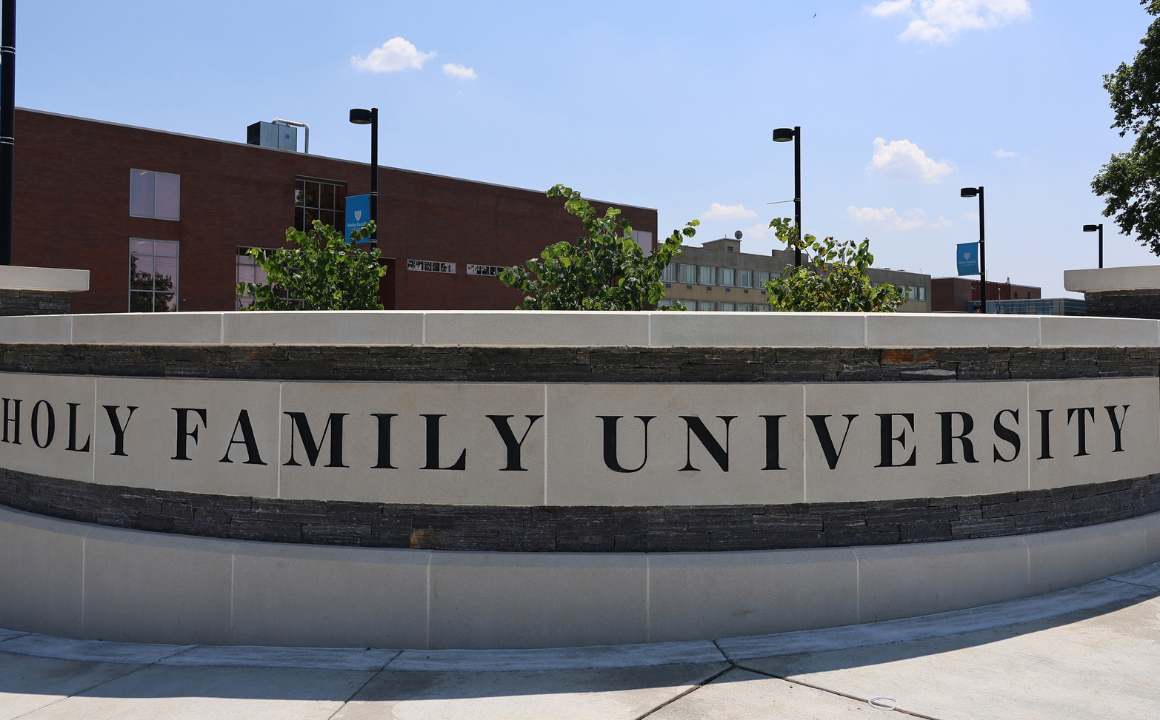Holy Family University’s Economic Impact Surges — Powering Growth in the Region It Serves

Holy Family University isn’t just growing — it’s lifting the economy with it. A new study confirms what many in the area already see: the University is fueling job creation and investment, while also boosting economic and social mobility across the region.
According to the Association of Independent Colleges and Universities of Pennsylvania (AICUP), Holy Family now generates $188.5 million in annual economic impact and supports 1,758 jobs. The new data published in 2025 marks a significant jump from AICUP’s last report in 2018, which estimated $113.9 million in impact and 1,258 jobs — reflecting a 65% increase in economic output and a 40% rise in employment over five years. It also contributes an estimated $15.4 million annually in tax revenue to state and local governments — nearly three times the 2018 amount.
Behind this growth is the University’s strong fiscal management – and its record-setting enrollment. Even as many institutions face declines, Holy Family has increased first-year enrollment by 85% over the past nine years, including a 59% jump in the last two years alone.
“Students are choosing Holy Family, because we deliver what matters: affordable excellence, strong career outcomes, and a deeply supportive environment,” said Dr. Anne Prisco, president of Holy Family University. “We focus on what helps students succeed, especially first-generation and working learners. When we open doors for them, they build better lives — and the entire region benefits.”
This student-first approach has earned national recognition. Holy Family was recently named an “Opportunity College and University – Higher Access, Higher Earnings” in the 2025 Carnegie Classifications — one of only 16% of U.S. institutions to earn the distinction. The designation reflects Holy Family’s success in enrolling local students and helping them achieve strong economic outcomes after graduation.
Strategic Growth in Programs and Regional Workforce
While the study covers economic activity across the Commonwealth, Holy Family’s true impact is concentrated in the 50-mile radius surrounding its campuses — where most students live, learn, and go on to work after graduation. This focused footprint deepens the University’s economic and social ties to Philadelphia and Bucks County, where it continues to expand its physical presence and programming.
In 2023, the University acquired its Newtown West campus — just two miles from its existing Newtown East location. The new campus provides nearly 48,000 square feet of classroom and lab space, allowing the University to grow high-demand programs in cybersecurity, biotechnology, entrepreneurship, and the health sciences.
“We’ve introduced programs that meet real community needs, and we’ve made education more accessible than ever,” said Dr. Bindhu Alappat, vice president of academic affairs. “From flexible course formats to new career-focused programs, we’re helping learners of all backgrounds succeed — whether they’re full-time students, parents, or adult learners returning to the classroom.”
In addition to expanding academic offerings, Holy Family is forging new partnerships to support workforce development across the region. This summer, the University signed a major agreement with the Shapiro Administration to offer tuition discounts to 80,000 Commonwealth of Pennsylvania employees and their spouses. The initiative, championed by Governor Josh Shapiro as part of a broader effort to strengthen the state’s workforce, aligns with Holy Family’s mission to expand access to affordable, career-focused education.
This new public-sector partnership adds to the University’s growing portfolio of tuition benefit agreements with employers across healthcare, education, and other key industries—creating affordable pathways to advancement for working adults across Pennsylvania.
While the AICUP study, conducted by the Parker Strategy Group, provides a snapshot of Holy Family’s growing economic footprint — from operations and capital investments to student and visitor spending — these numbers tell only part of the story. The true impact of Holy Family University is measured in lives changed and communities strengthened. That generational impact extends beyond the classroom, reinforcing families, neighborhoods, and the regional workforce for years to come.
